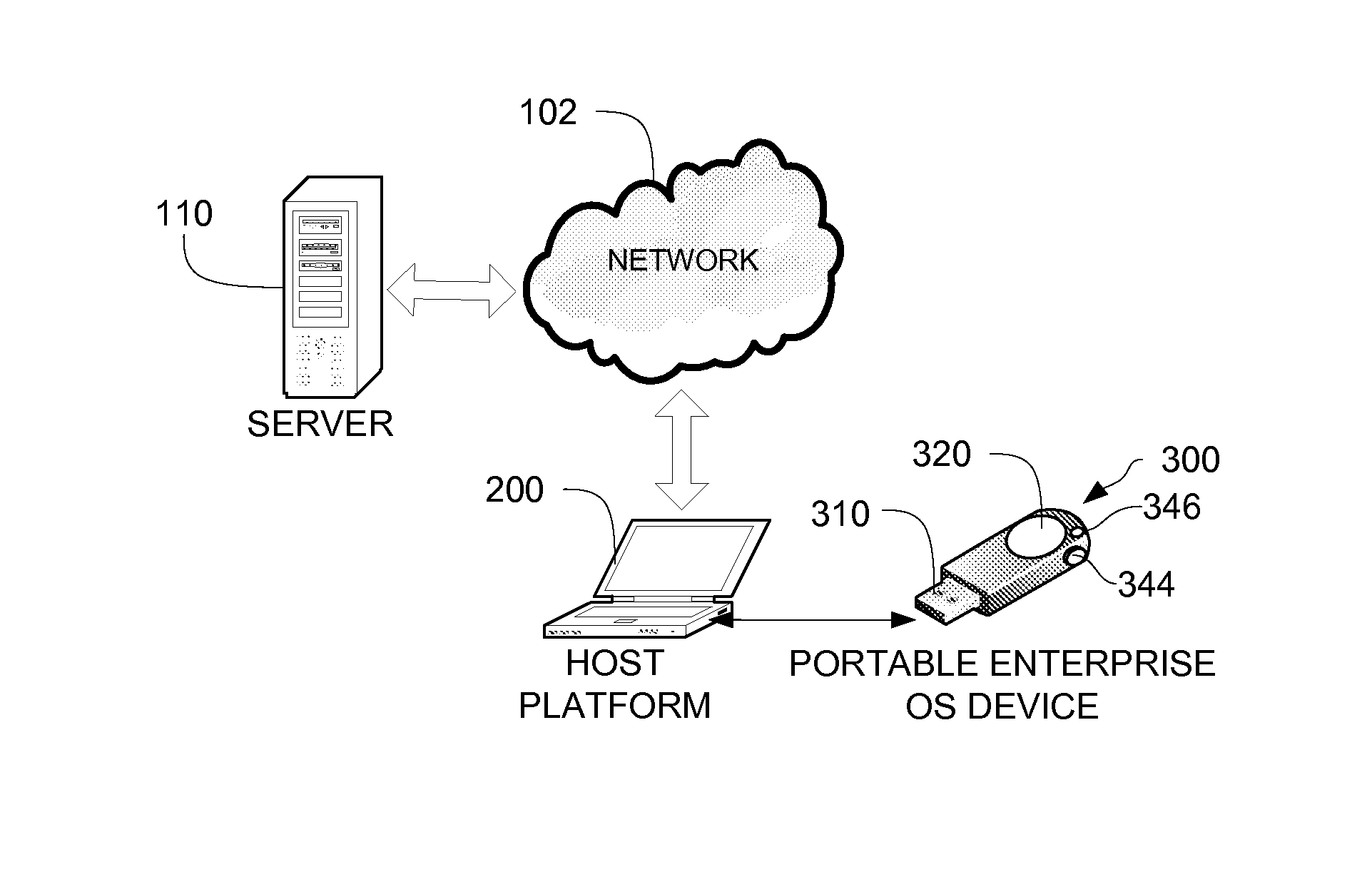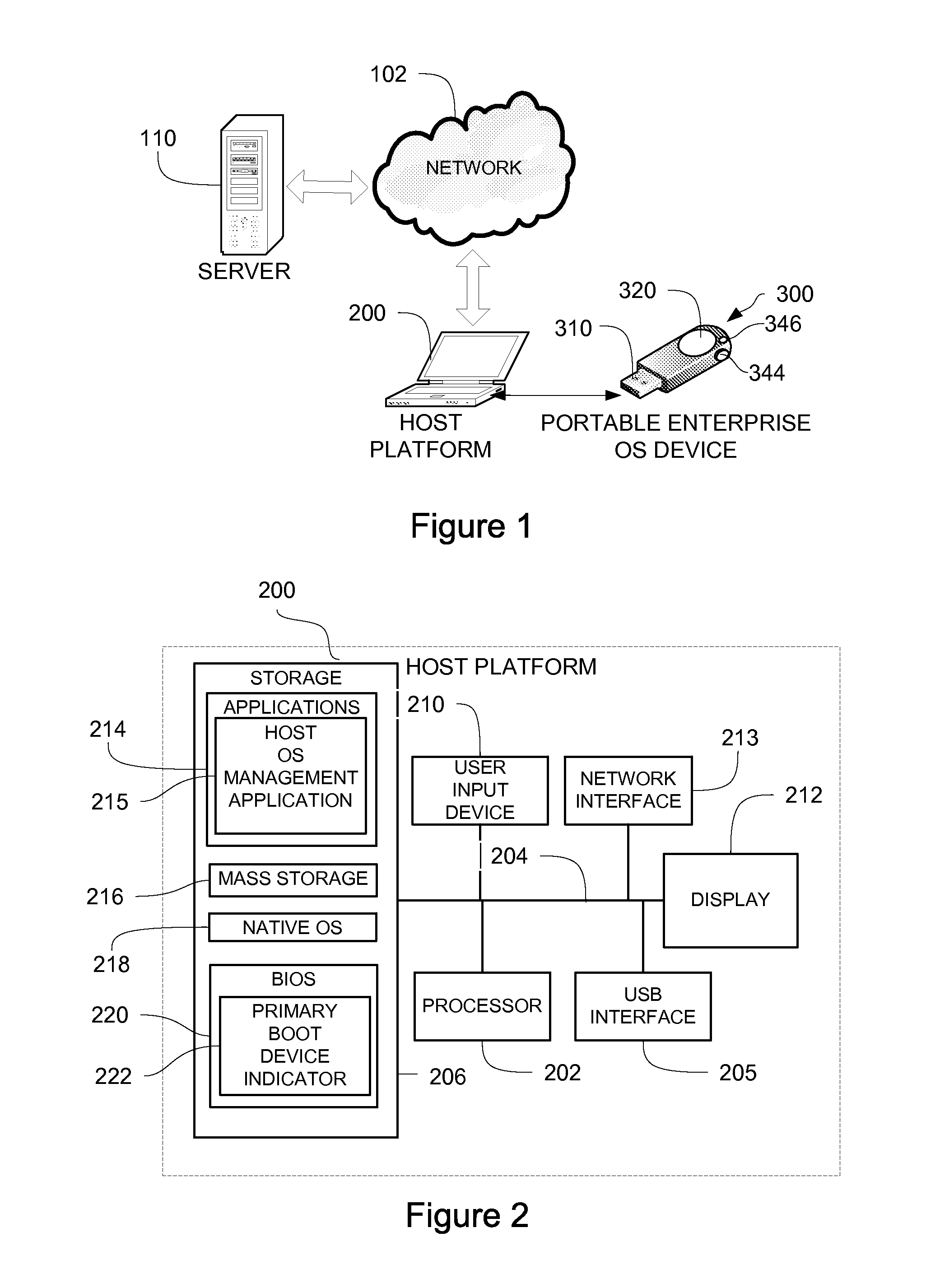Portable, secure enterprise platforms
a portable operating system and enterprise platform technology, applied in the field of computing platforms, computer operating systems and information security, can solve the problems of unauthorized and undetected access, security risks, and compromise of the “secure” operating system on the device, so as to prevent unauthorized access, enhance security, and mitigate security risks.
- Summary
- Abstract
- Description
- Claims
- Application Information
AI Technical Summary
Benefits of technology
Problems solved by technology
Method used
Image
Examples
Embodiment Construction
[0035]It will be understood, and appreciated by persons skilled in the art, that one or more processes, sub-processes, or process steps described in connection with the Figures included herewith may be performed by hardware, firmware and / or software. If the process is performed by software or firmware, the software or firmware may reside in software or firmware memory in a suitable electronic processing component or system such as one or more of the functional components or modules schematically depicted in the Figures. The software in software memory may include an ordered listing of executable instructions for implementing logical functions (that is, “logic” that may be implemented either in digital form such as digital circuitry or source code or in analog form such as analog circuitry or an analog source such as analog electrical, sound or video signal), and may selectively be embodied in any computer-readable medium for use by, or in connection with, an instruction execution sy...
PUM
 Login to View More
Login to View More Abstract
Description
Claims
Application Information
 Login to View More
Login to View More - R&D
- Intellectual Property
- Life Sciences
- Materials
- Tech Scout
- Unparalleled Data Quality
- Higher Quality Content
- 60% Fewer Hallucinations
Browse by: Latest US Patents, China's latest patents, Technical Efficacy Thesaurus, Application Domain, Technology Topic, Popular Technical Reports.
© 2025 PatSnap. All rights reserved.Legal|Privacy policy|Modern Slavery Act Transparency Statement|Sitemap|About US| Contact US: help@patsnap.com



